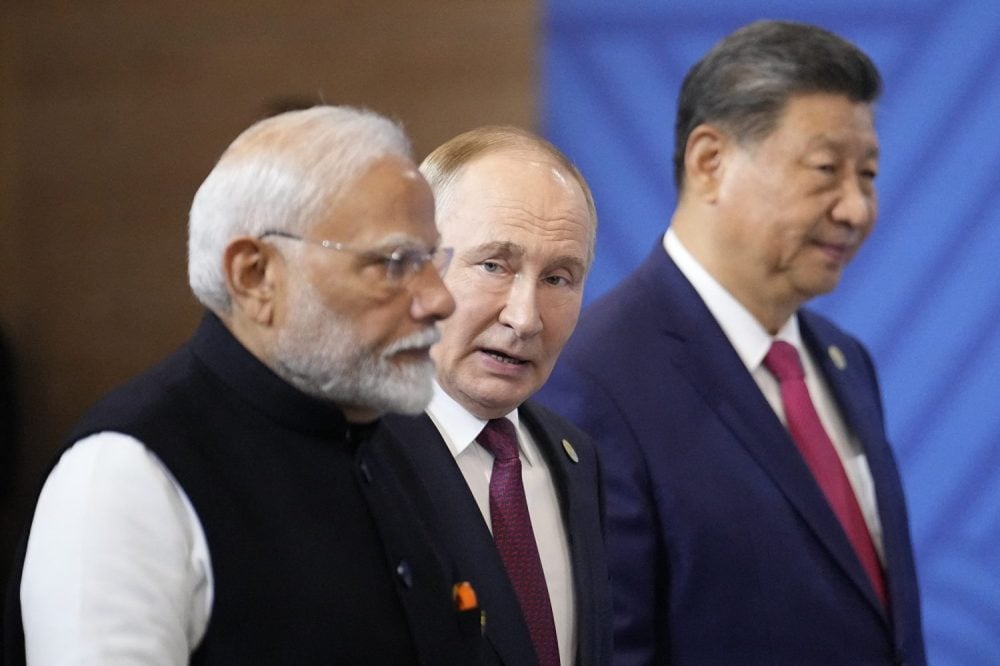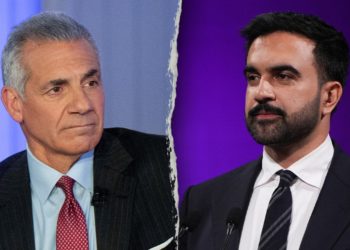You know a relationship is on the skids when one party refuses to answer the phone. Indian Prime Minister Narendra Modi did just that recently, according to reports in the German media, when he declined to take a number of calls from U.S. President Donald Trump. This week, Trump turned the simmering tensions into a full crisis by hitting India—notionally a vital U.S. partner in its long-term competition with China—with 50 percent punitive tariffs. Suddenly being treated this way has caused understandable anger and shock in New Delhi, prompting a hunt for new foreign-policy options.
Modi will demonstrate his independence from Washington when he heads to Beijing this week for a summit of the China-led Shanghai Cooperation Organization (SCO), a loose bloc promoting economic and security ties. It will be Modi’s first visit to China since 2018 and heralds an anticipated thaw in India-China ties, following a period of intense competition prompted by deadly clashes on their Himalayan border in 2020. Both China and Russia, which is also an SCO member, will now court India, seeking to capitalize on Modi’s rift with Trump. But New Delhi will rightly be wary of this. India’s recent foreign-affairs strategy has aimed for balanced engagement with multiple powers, with a particular focus on building ties with technologically advanced democracies. From India’s vantage point, this remains a sensible long-term approach, even if ties with the United States are tense. Throwing its lot in with China and Russia is to walk into a trap that could quickly backfire.
Trump’s approach represents a dramatic and wrongheaded departure from previous U.S. policy. For two decades, Washington has pursued a policy of strategic altruism toward New Delhi, patiently investing in better ties on the understanding that India’s rise served the United States’ long-term interests. Trump has ditched that for a new kind of impulsive unilateralism, dismantling years of engagement in pursuit of short-term leverage for a trade deal. This shift constitutes a monumental act of geopolitical self-harm, given India’s critical position as a long-term geopolitical counterweight to China.
India must shoulder some responsibility for its predicament. New Delhi has pursued multi-alignment, building ties with Western partners while maintaining links with countries like Russia and Iran. Under former U.S. President Joe Biden, Washington tolerated this balancing act, recognizing India’s strategic value. Trump’s team took a dimmer view, imposing additional tariffs in response to India’s purchases of Russian oil. Until early this year, New Delhi thought it could manage Trump well enough. Only belatedly has Modi’s team recognized its miscalculation. At home, Modi took political risks to align India more closely with Washington, facing criticism from advocates of traditional nonalignment. To have this carefully cultivated partnership thrown back so abruptly by Trump has proven galling, generating domestic political uproar.
The result leaves Indian foreign policy facing genuine dilemmas. Multi-alignment theoretically seeks to maintain good ties with multiple powers simultaneously. In practice, however, India has lately focused heavily on strengthening ties with the United States, fellow Quad nations Australia and Japan, and European partners. Now, the central pillar of that strategy—namely its ties with Washington—is crumbling.
In its place, India is exploring alternatives. China and Russia appear tempting. Modi’s first diplomatic response to the crisis with Washington involved calling both Russian President Vladimir Putin and Chinese President Xi Jinping. Last week, Indian External Affairs Minister S. Jaishankar traveled to Moscow to meet with Putin, who is expected to visit India later this year.
Both authoritarian powers offer options that could, in theory, compensate for diminished cooperation with the United States. India maintains long-standing ties with Russia for defense procurement and energy imports, a relationship that could potentially be expanded. China presents a more complex opportunity, given border disputes and strategic competition in the region, including in South Asia. When Modi first assumed office, he was open to closer ties with China but a mix of Chinese intransigence and U.S. engagement led him down a different path.
Now, confronted with Washington’s hostility, those in New Delhi who warned against trusting the Americans are taking a public victory lap. Strengthening ties with Russia provides one obvious option. Repairing ties with China is also possible. A meeting between Modi and Xi on the sidelines of the SCO summit will likely produce modest improvements, including practical measures like more commercial flights between the two nations. Beyond that, much rests on China’s approach, given that Beijing has previously shown few signs of being willing to address India’s long-term security concerns, from disputes along the shared border in the Himalayas to Chinese naval activities in the Indian Ocean.
Despite these immediate pressures, a major shift toward China and Russia would prove a serious mistake. New Delhi’s recent foreign-policy approach was built on sound insights about the country’s development requirements. To sustain rapid growth, India needs foreign investment, which is most likely to come from richer and more technologically advanced nations. It also needs technology transfers for industrial and digital transformation, which neither China nor Russia will likely be willing to provide. Most importantly, how to manage an assertive China remains India’s long-term challenge. None of these underlying realities have changed, simply because of Trump’s diplomatic intransigence.
As India contemplates its options, therefore, three points should be kept in mind.
First, the current challenge with the United States may not last. Given Trump’s transactional approach and frequent changes of mind, a face-saving agreement that allows both sides to step back from confrontation remains possible. If a deal is reached to paper over recent divisions, Trump could still visit New Delhi this fall to attend a planned Quad summit.
Second, Russia and China cannot provide what India needs most for long-term development and security. India has been gradually but systematically diversifying away from Russian weapons, as it seeks more modern and reliable suppliers. Moscow is useful for cheap energy but offers little in terms of advanced technology and investment. China, meanwhile, is viewed with deep suspicion by Indian security establishments, who rightly consider it the primary long-term threat to Indian interests. To manage China, India needs friends elsewhere.
Third, India has options beyond simply choosing between the United States and China. It can further deepen security cooperation with Australia and Japan, while also strengthening ties with South Korea, another major arms producer. European nations are eager to expand ties, too, and a long-awaited trade deal with the European Union appears within reach. India can continue building relationships with other advanced middle powers, including Israel and the United Arab Emirates in the Middle East, as well as Singapore and Malaysia in Southeast Asia.
All of this is unlikely to entirely replace what India may have lost through the deterioration of its U.S. partnership. But New Delhi is not alone in its predicament. Like the leaders of other U.S. allies and partners in Europe and Asia, Modi must now function in a world where Washington is transactional, unpredictable, and coercive. Even so, abandoning India’s strategy of engagement with technologically advanced democracies for the uncertain embrace of authoritarian alternatives would be unwise. Even if the hotline to Washington is dead, there are plenty of leaders in Europe and elsewhere whose calls Modi should be happy to take.
The post Why India Should Not Walk Into the China-Russia Trap appeared first on Foreign Policy.




